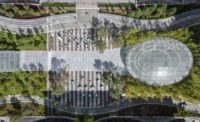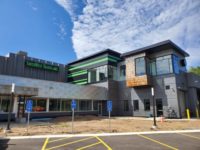Mendocino Transit Authority
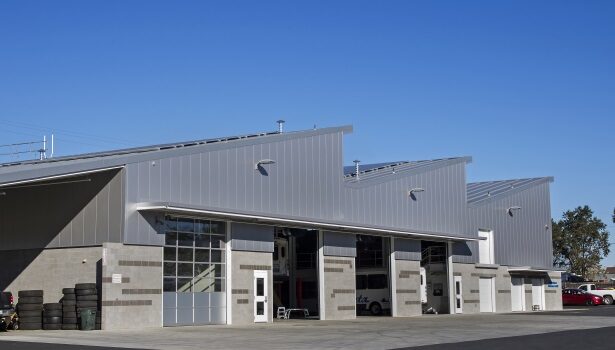
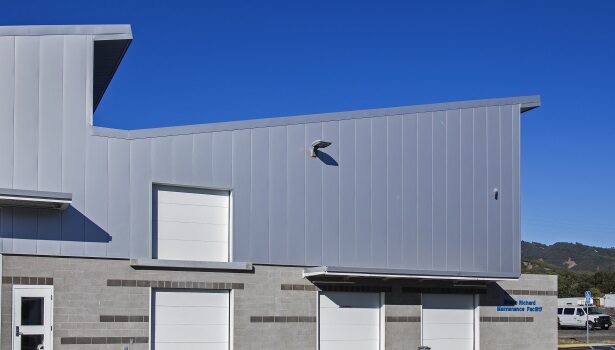
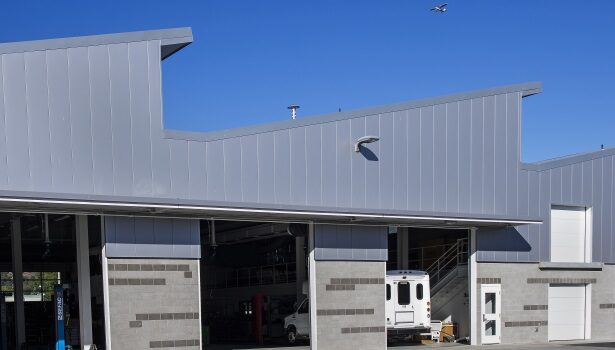
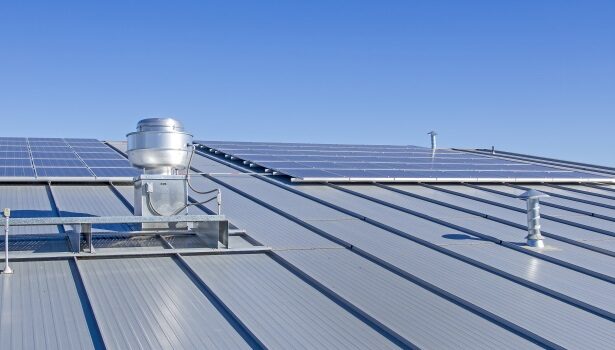
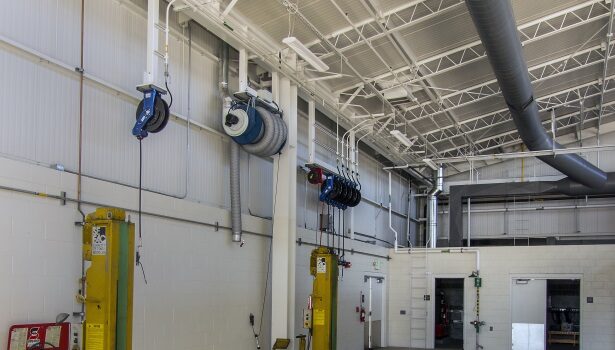





The Mendocino Transit Authority (MTA) says it services a population of 90,000 across a 2,800-mile swath of northern California. Its vehicle fleet logs more than 881,000 miles annually.
With numbers like that, it is imperative to have a state-of-the-art shop to keep buses running in top shape. In August 2012, the Mendocino County agency dedicated its new bus maintenance facility in the county seat of Ukiah. The 17,196-square-foot structure features maintenance bays along with fueling and vehicle wash areas, plus storage space. The activities performed inside may seem ho-hum yet the same adjective cannot be applied to the facility’s exterior, which includes insulated metal roof and wall panels from Kingspan.
Award Winner
A trio of sloped roofs gives the facility a sense of motion while north-facing above-eye-level windows allow outside light to pour into the interior space but without excess. The building earned a 2012 AIA Redwood Empire Chapter honor award in the “Built Project” category.
“The project was designed to minimize operational and maintenance costs, and to provide a strong visual presence from the adjacent freeway,” notes the Web site for TLCD Architecture, the Santa Rosa, California-based firm.
Division 13 Buildings Inc., of Windsor, Calif., addressed such concerns when it installed 6-inch KingZip insulated roofing panels and KS Optimo insulated wall panels as part of the project. Division 13 President and Owner Marc Davis said his team worked on the job site for three months.
“As you can see from the photos, the building was basically built in three single slope roof lines, just to add contrast and look to it,” said Davis, whose company specializes in pre-engineered metal buildings. “The walls were flat metallic silver with trim-less ends and joints. And other materials were integrated into the walls such as CME block, and the front elevation has wood siding.”
“IMPs Offer ‘Architectural Appeal’ and more,” said Davis. “Kingspan products were ideal for the maintenance building because of the panels’ durability, high insulation values, ease of installation, and eye-catching finishes.”
The standing seam insulated metal roof panel combines impressive R-values with low thermal bridging and superior airtightness. This can reduce energy consumption in buildings by nearly a third when compared to standard cavity insulation systems. Not only that, but KingZip’s single-component system yields installation times that are nearly half that of multi-part roofing systems.
The company’s Optimo insulated wall panels also are single-component products and offer the same energy-efficiency benefits provided by KingZip. Davis added that Optimo wall panels contributed greatly to the “architectural appeal” of the MTA project.
Insulated metal roof and wall panels consist of a simple yet smart design. They are made from an insulated foam core material sandwiched between two metal skins. The panels easily interlock with one another, forming a weather-resistant seal with popularity on the rise in California.
“With new energy requirements, (IMPs) are going to become more of the norm,” said Davis.
TLCD Architecture notes that the insulated metal roof and wall panels attached directly to the metal structure of the bus maintenance facility. The firm says the IMPs are a good alternative to a traditional stud wall.
“These panels do not require painting or maintenance and are one of the many sustainable features of this project,” TLCD writes of the MTA job. “The metal panels sit on a base of patterned concrete block walls that provide protection from vehicles.”
Looking for a reprint of this article?
From high-res PDFs to custom plaques, order your copy today!





